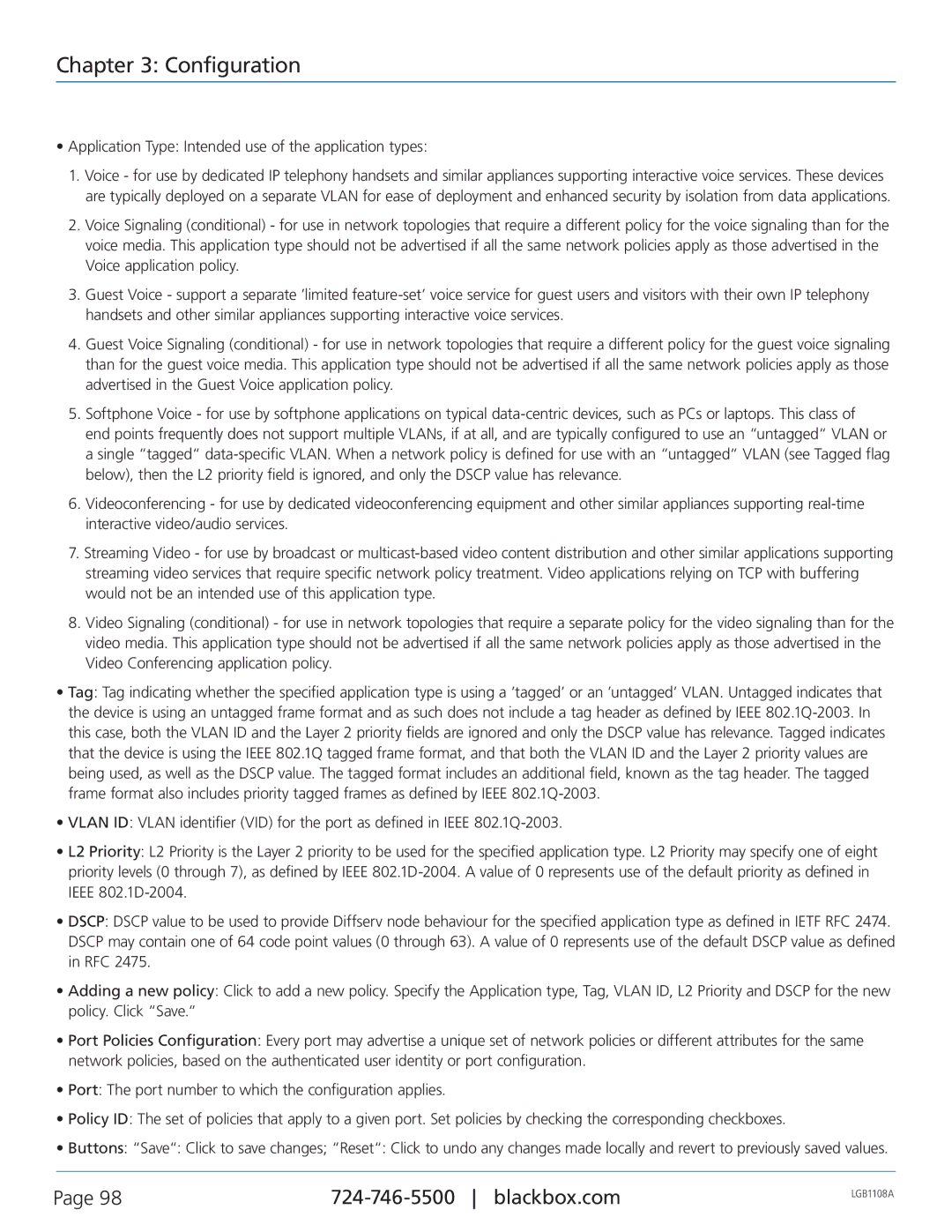
Chapter 3: Configuration
•Application Type: Intended use of the application types:
1.Voice - for use by dedicated IP telephony handsets and similar appliances supporting interactive voice services. These devices are typically deployed on a separate VLAN for ease of deployment and enhanced security by isolation from data applications.
2.Voice Signaling (conditional) - for use in network topologies that require a different policy for the voice signaling than for the voice media. This application type should not be advertised if all the same network policies apply as those advertised in the Voice application policy.
3.Guest Voice - support a separate ’limited
4.Guest Voice Signaling (conditional) - for use in network topologies that require a different policy for the guest voice signaling than for the guest voice media. This application type should not be advertised if all the same network policies apply as those advertised in the Guest Voice application policy.
5.Softphone Voice - for use by softphone applications on typical
6.Videoconferencing - for use by dedicated videoconferencing equipment and other similar appliances supporting
7.Streaming Video - for use by broadcast or
8.Video Signaling (conditional) - for use in network topologies that require a separate policy for the video signaling than for the video media. This application type should not be advertised if all the same network policies apply as those advertised in the Video Conferencing application policy.
•Tag: Tag indicating whether the specified application type is using a ’tagged’ or an ’untagged’ VLAN. Untagged indicates that the device is using an untagged frame format and as such does not include a tag header as defined by IEEE
•VLAN ID: VLAN identifier (VID) for the port as defined in IEEE
•L2 Priority: L2 Priority is the Layer 2 priority to be used for the specified application type. L2 Priority may specify one of eight priority levels (0 through 7), as defined by IEEE
•DSCP: DSCP value to be used to provide Diffserv node behaviour for the specified application type as defined in IETF RFC 2474. DSCP may contain one of 64 code point values (0 through 63). A value of 0 represents use of the default DSCP value as defined in RFC 2475.
•Adding a new policy: Click to add a new policy. Specify the Application type, Tag, VLAN ID, L2 Priority and DSCP for the new policy. Click “Save.“
•Port Policies Configuration: Every port may advertise a unique set of network policies or different attributes for the same network policies, based on the authenticated user identity or port configuration.
•Port: The port number to which the configuration applies.
•Policy ID: The set of policies that apply to a given port. Set policies by checking the corresponding checkboxes.
•Buttons: “Save“: Click to save changes; “Reset“: Click to undo any changes made locally and revert to previously saved values.
Page 98 | LGB1108A | |
|
|
